Stop signs OK’d by Bloomington city council over dissent from two members
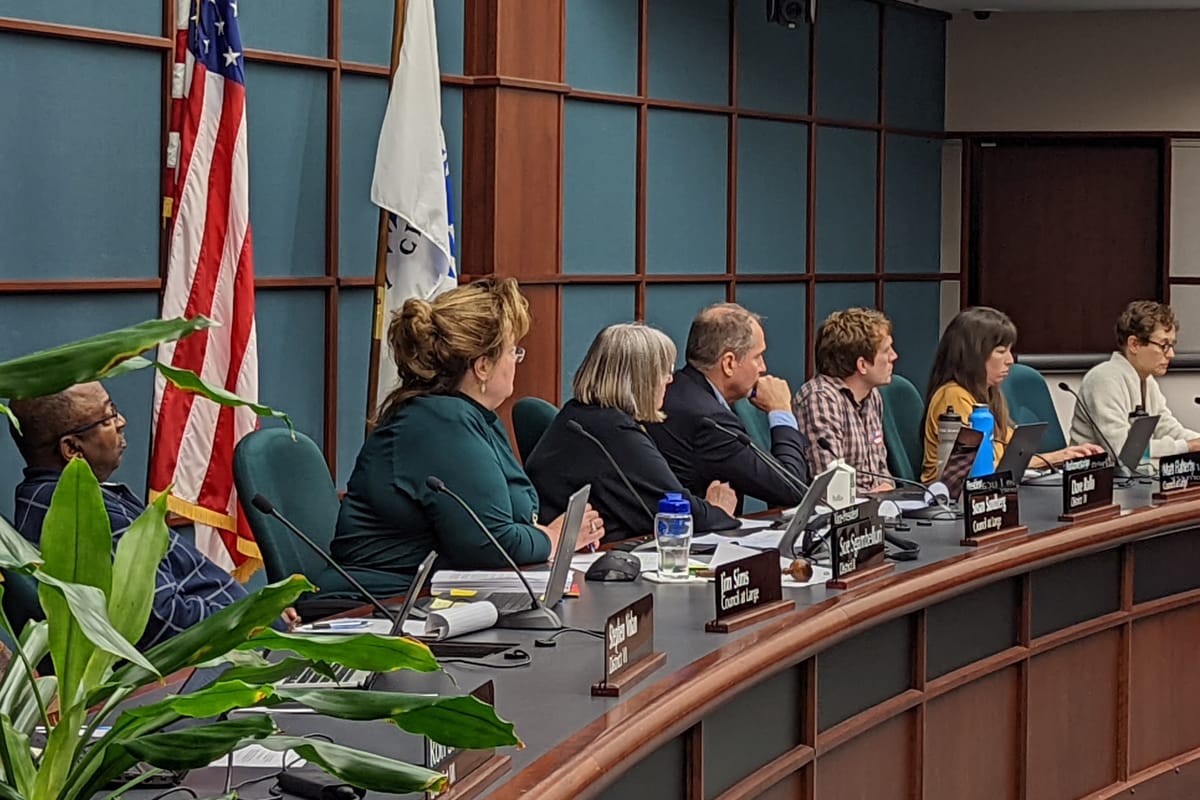
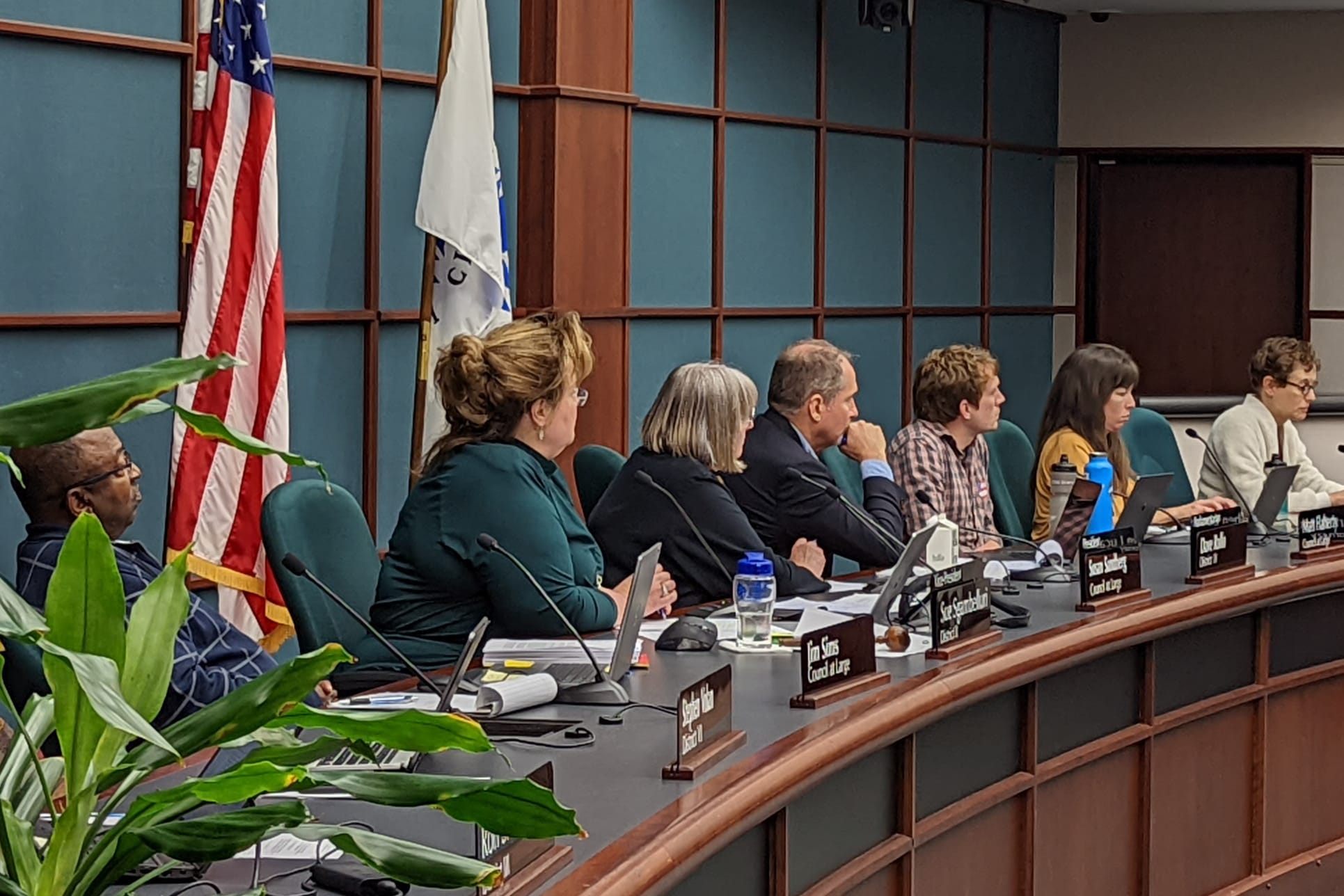
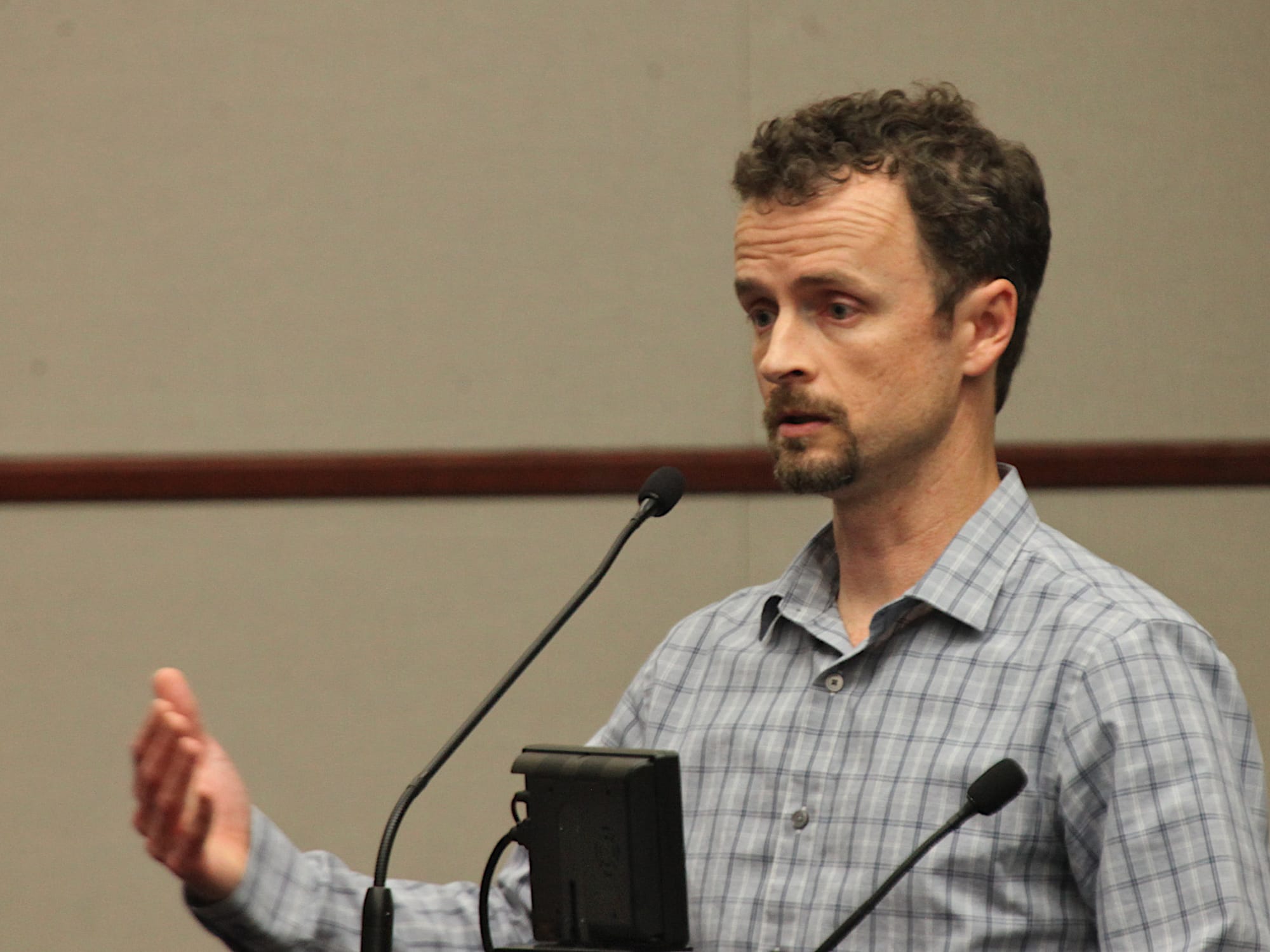

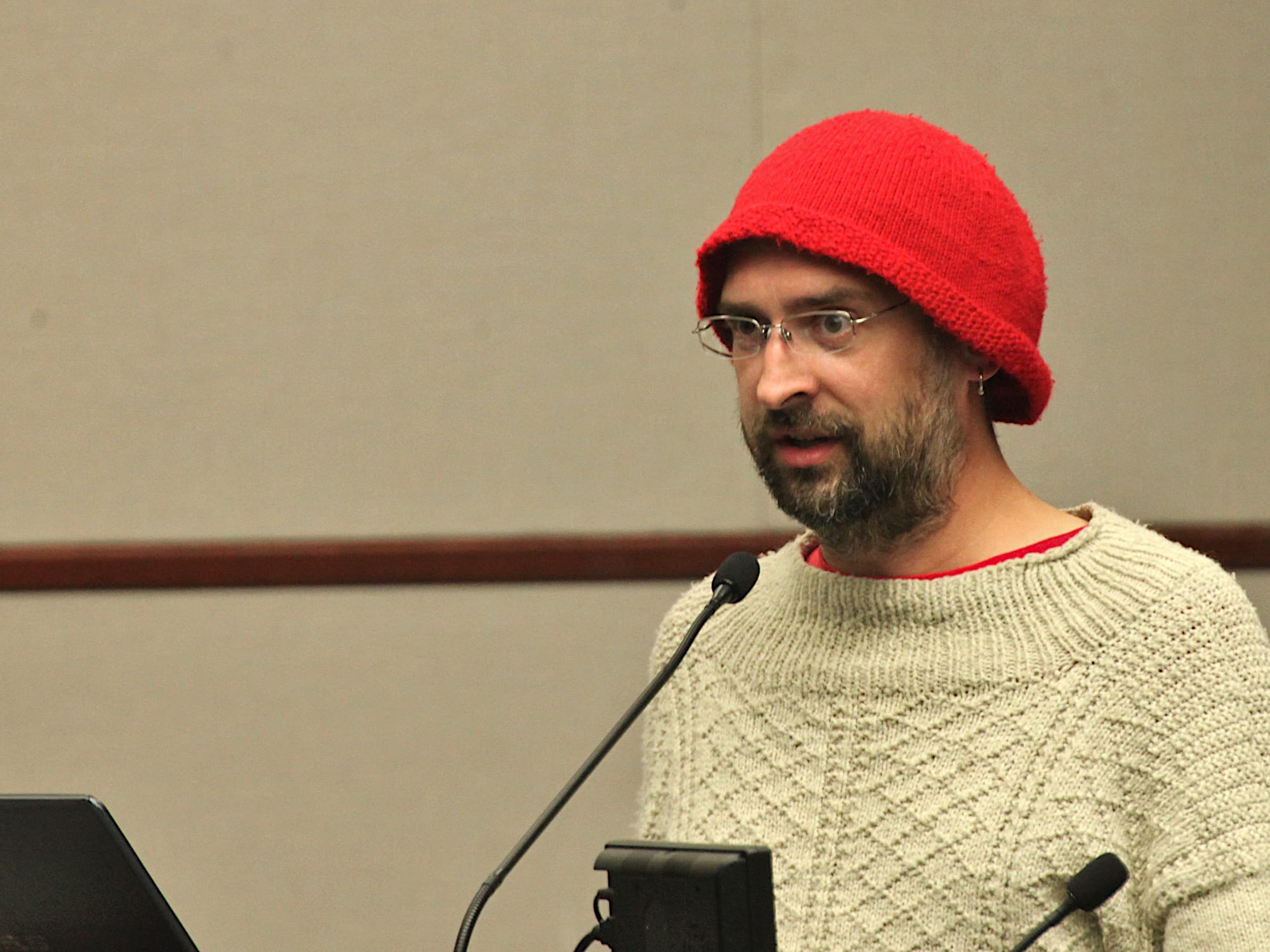
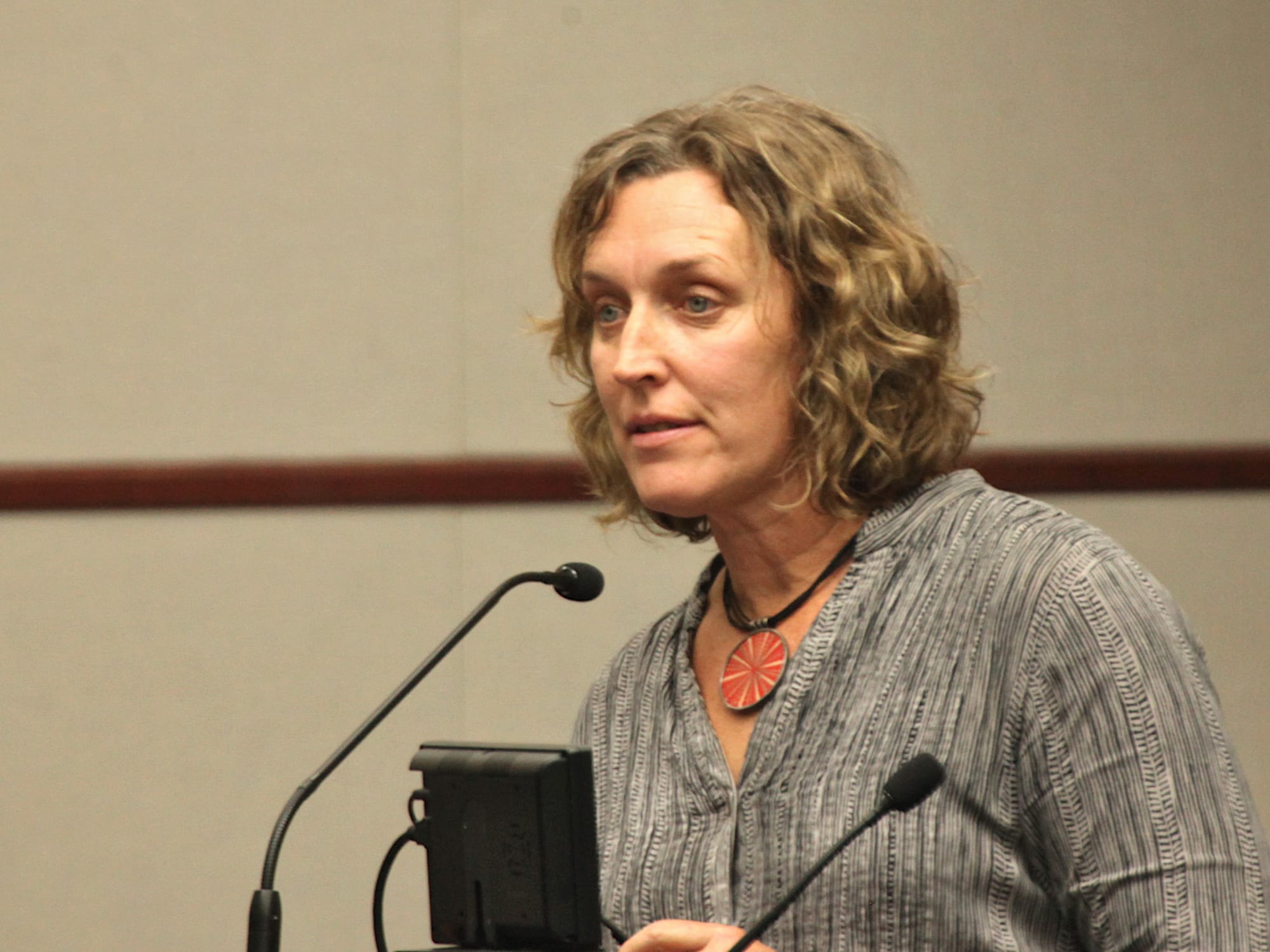
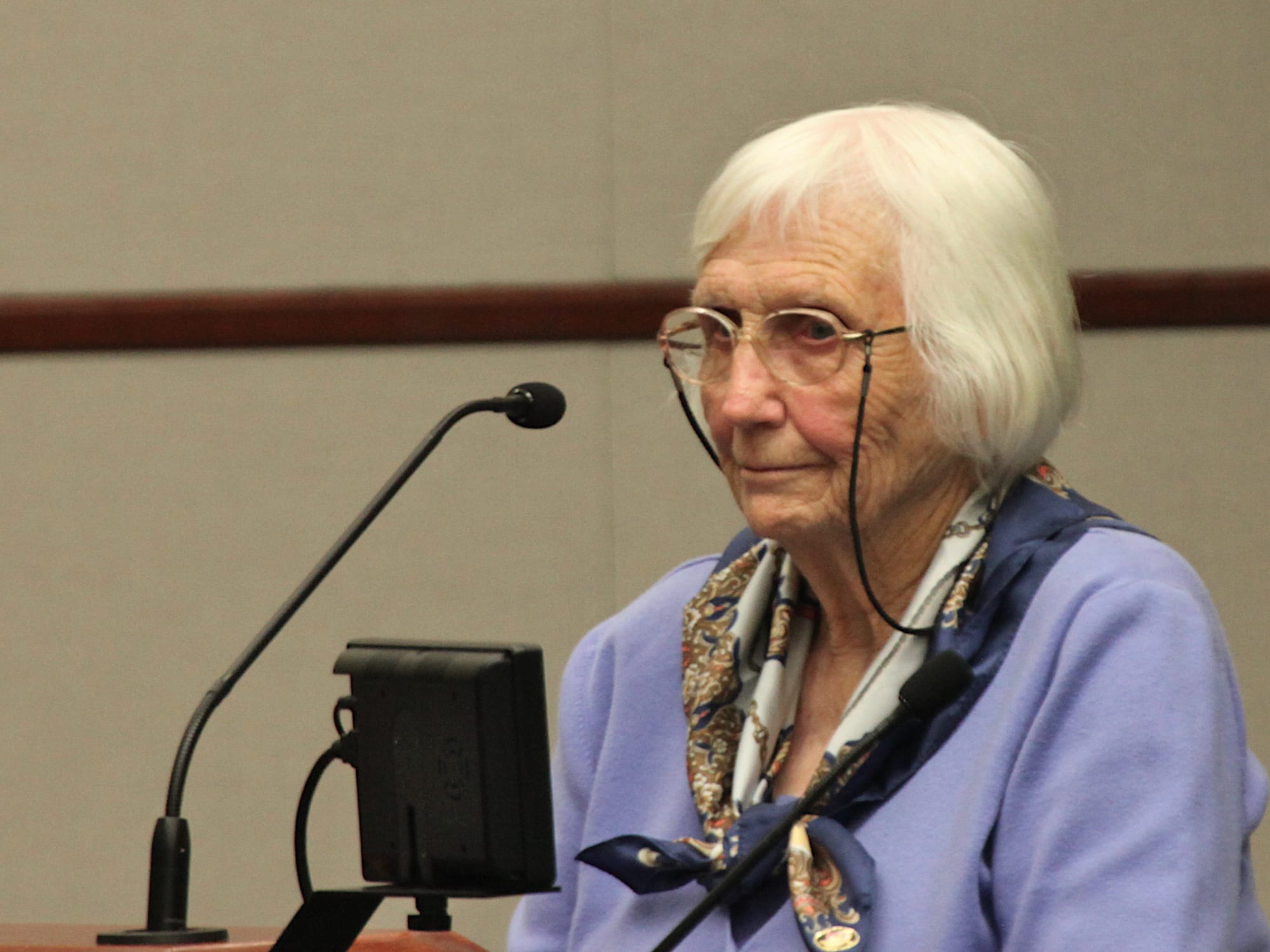



Stop signs requiring traffic on Maxwell Lane to halt at Sheridan Drive have been approved by Bloomington’s city council on a 6–2 vote with one abstention.
The additional stop signs make the intersection at Maxwell Lane and Sheridan Drive an all-way stop. Currently it’s a two-way stop, which requires traffic on Sheridan to stop at Maxwell.
The two councilmembers who voted against the stop signs were Matt Flaherty and Kate Rosenbarger. They both cited the recommendation from the city’s engineering department when the proposal was in front of the city’s traffic commission, which was against making the intersection an all-way stop.
From the city engineering report: “[T]his intersection does not meet the MUTCD [Manual on Uniform Traffic Control Devices] guidelines for all-way stop control, and staff has concerns with the potential of establishing a pattern of installing all-way stop control at locations that do not meet the guidelines.”
Those who voted for the stop sign pointed to a different part of the engineer’s recommendation, which stated, “Staff acknowledges the unique traffic pattern at this intersection and does not have significant concerns if an all-way stop is installed.”
Abstaining from the vote was Steve Volan, who said, “I don’t disagree with the neighbors. I also don’t agree with them. I can’t vote for this. But I don’t want to vote against it…”
The impetus to add the all-way stop came from neighbors who find that they have to “scurry” across Maxwell, because traffic coming from the uphill side of the road, that is from the west, is not visible until it’s close to the intersection.
As nearby resident Stephanie Hatton put it, when she addressed Bloomington’s traffic commission in late July, “We feel that the only way to make this intersection truly safe for all is to legally require vehicles to cease—not just slow down or be calmed.”
Hatton added, “An all-way stop ensures pedestrians of all ages and abilities have the time and right-of-way to cross safely.”
The MUTCD gives criteria defining when all-way stops are warranted.
Among the criteria are the number of crashes recorded at the intersection. If five or more crashes have taken place in a 12-month period, that could be corrected by a multi-way stop installation, then a stop sign is warranted. But no crashes had been recorded for that intersection for the last five years.
The intersection also does not meet the MUTCD criteria for minimum traffic volumes.
Hatton’s presentation to the council on Wednesday was an updated version of the one she had delivered to the traffic commission in July, with photographs and diagrams of the intersections annotated with distances and road grades she had measured by hand.
To make a plea for not adhering to a rigid application of MUTCD criteria, Hatton drew on her background in the field of English medieval manuscript illumination. The field demands adherence to certain methodologies and rubrics, like iconography and previous doctrine, she said. But she added, “I also learned to search for the humanity behind an artwork to consider the lived experience that informed an otherwise anonymous work of devotion.”
Almost all of the public comment was unambiguously in favor of installing the stop sign.
One partial departure from that pattern came from Lisa Thomassen who said, “I am impressed that the neighbors who live here are willing to sign on for the incredible amount of noise from our cars that don’t have required inspection that are going to be stopping and starting and the toxic dust for brakes and exhaust as engines are revving all things that come with a busy four-way intersection.”
Hunter Rackley, who described himself as a data analyst, criticized the resident-led traffic calming process, which Hatton had started but abandoned, in the face of clear opposition from her neighbors. They did not want to see vertical deflection devices installed on the street, Hatton reported.
About that resident-led traffic calming process, Rackley said that it “seemed to lack appropriate collaboration between community members and city departments.”
Rackley continued, “It seems to have prevented consideration of a more holistic approach.” He added, “Here we are tonight, spending lots of time talking about what are other potential solutions.” The other solutions under discussion were being weighed without the benefit of full research, he said.
City engineer Andrew Cibor talked about taking a holistic approach in helping pedestrians feel comfortable crossing Maxwell Lane along a longer stretch than just the one intersection. Traffic calming devices—that is, speed humps and bump outs—are the typical tools used for addressing corridor-wide issues, Cibor said.
Offering full-throated opposition to the installation of a stop sign was Greg Alexander, who led off by saying he was glad that the council was looking at intersections. He continued, “I’ve got some intersections for you: Madison and 17th; College and Dodds; Walnut and Kirkwood; Rogers and Hays.”
Alexander clarified his list of intersections: “That’s fatal crashes on city-managed streets in 2021.”
The word “safe” had received a lot of air time before Alexander spoke. About the spots with fatal crashes, Alexander said, “Safety is what those people didn’t have when their body was mangled by glass and steel. Those four people didn’t receive proactive safety when they were using public infrastructure at those four intersections.”
Alexander added, “Another thing those locations have in common: None of them are in Elm Heights.”
Alexander told the council, “We need our engineers to take this pattern of death seriously. We need them to feel like they have a public mandate to take bold and effective actions.”
Instead of supporting the city’s engineering department, Alexander told councilmembers, they were “letting one neighborhood micromanage them.” Alexander wrapped up by saying, “Thanks to this council’s work, now they know—valuable insight—Elm Heights is more important than the rest of the city. Is that knowledge really going to help them stop the carnage?”
Alexander called it a “remedial lesson in politics.”
Giving the night’s deliberations an extra dash of political flavor was the public commentary in support of the stop sign from former Bloomington mayor Tomi Allison, former city councilmember Jeff Richardson, and Kerry Thomson, who is a declared candidate for Bloomington mayor in 2023. Thomson lives at the northeast corner of Maxwell and Sheridan.
Alexander got an assurance from councilmember Jim Sims that Sims had heard his commentary. Sims said, “Let’s hope everyone else heard that and can use that process to begin some of these things in their neighborhoods where there’s concerns that we could advocate and maybe support.”
About the council’s response to the Elm Heights neighborhood compared to other parts of the city, councilmember Isabel Piedmont-Smith said, “Not every neighborhood has a Ms. Hatton and they shouldn’t have to have one.” Piedmont-Smith continued, “The squeaky wheel gets the grease, but that’s not the best way to govern and to allocate local dollars.”
In her remarks before voting for the stop sign, Isabel Piedmont-Smith said she fears that putting a stop sign at the location could make it more dangerous, because pedestrians think cars will stop when they won’t actually stop.
Sue Sgambelluri said there’s no way to guarantee that a crash won’t happen at an intersection, but it’s possible to ask: What will likely make it safer? There’s a difference between councilmembers and city staff, Sgambelluri said: “Unlike city staff, we do answer to our constituents—we do have an obligation to listen.”
Sgambelluri continued by saying that councilmembers don’t have an obligation to do every single thing they’re asked to do. But she takes it seriously when someone comes to her with a well-informed, well-thought-out case for a particular course of action.
The intersection is located in Dave Rollo’s current district. He sponsored the ordinance, along with Susan Sandberg and Ron Smith. Rollo said it was a cost-effective approach to what he called a “hazardous” intersection.




Comments ()